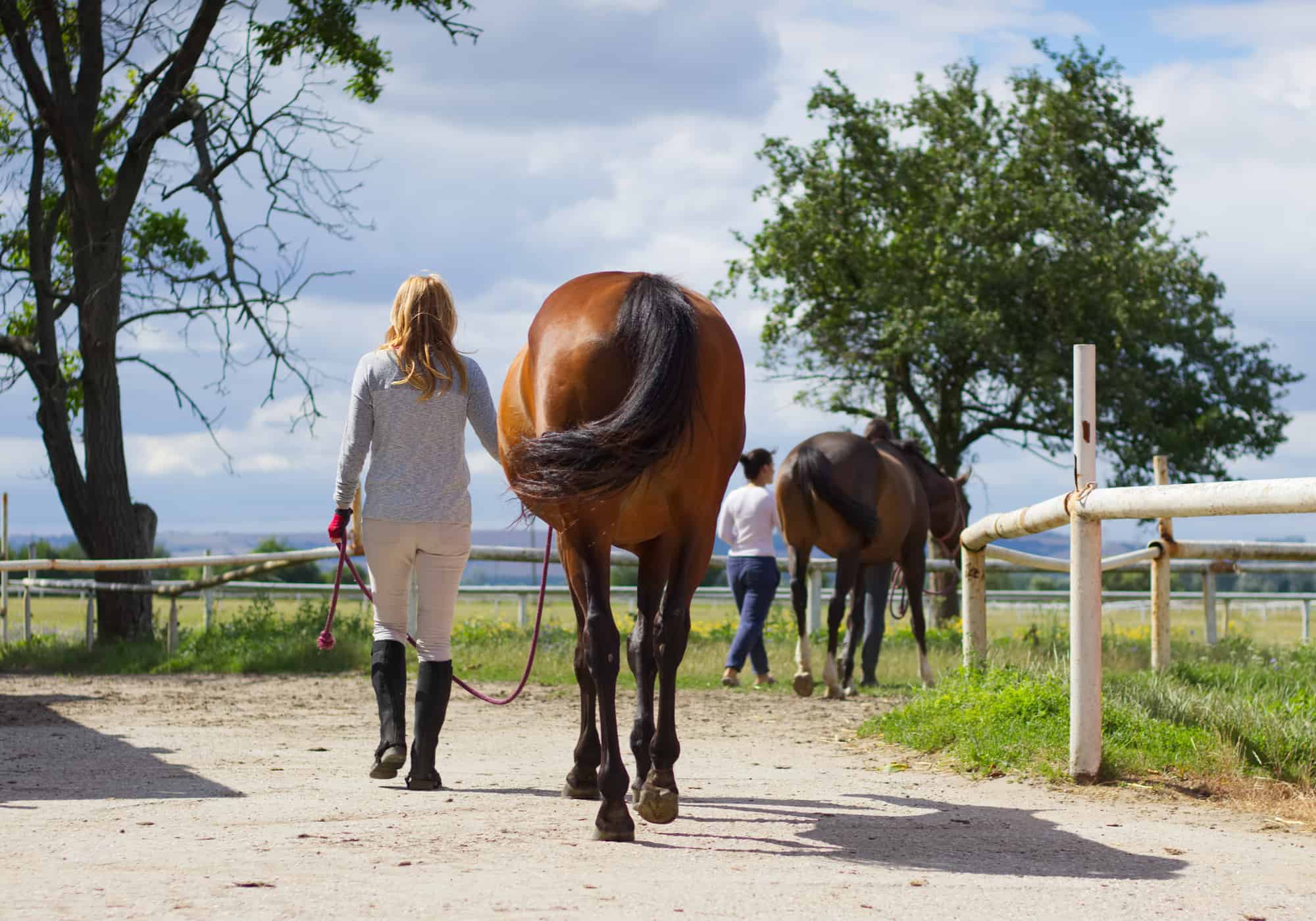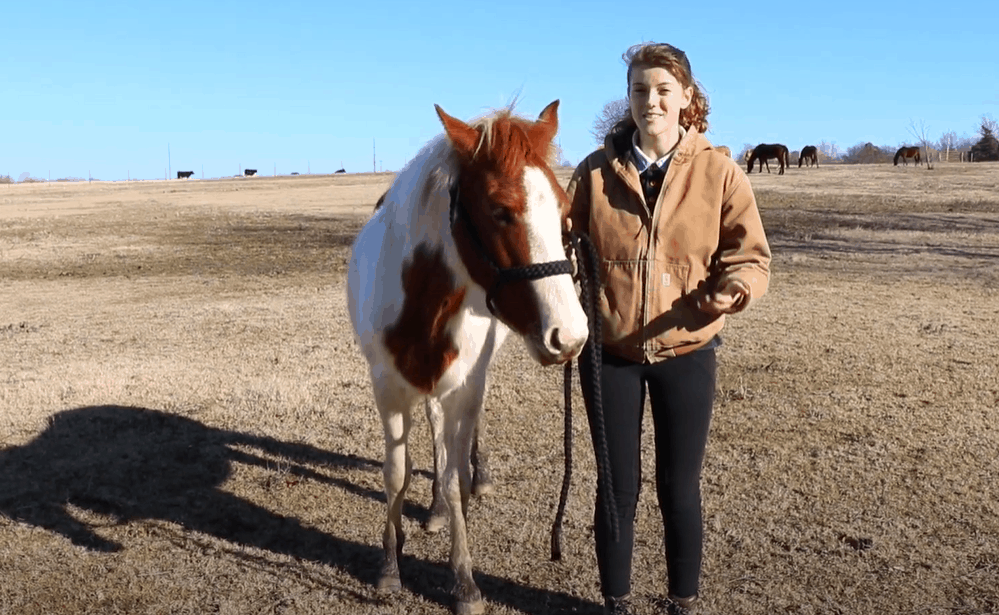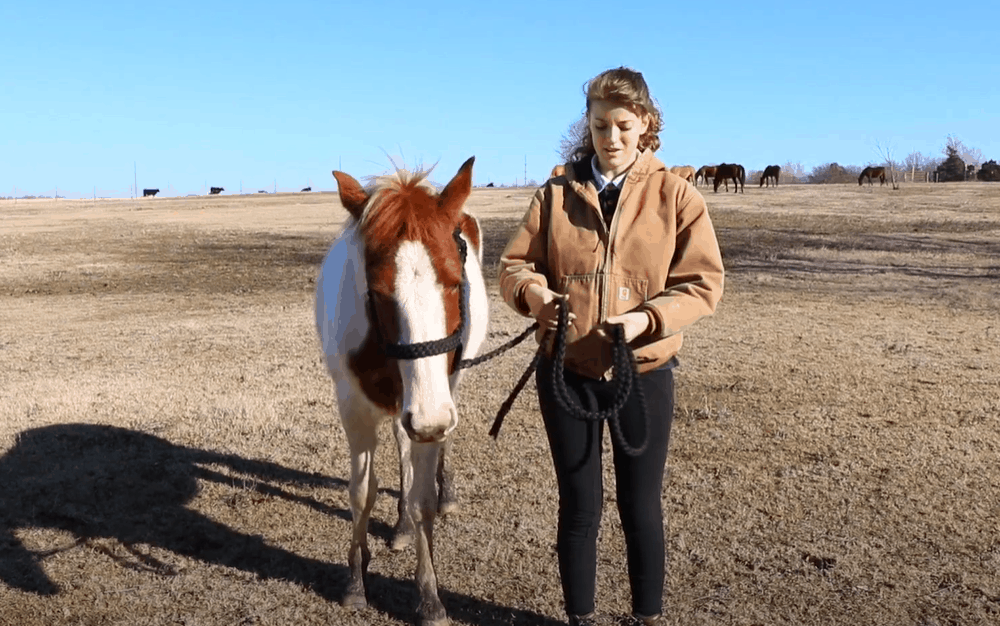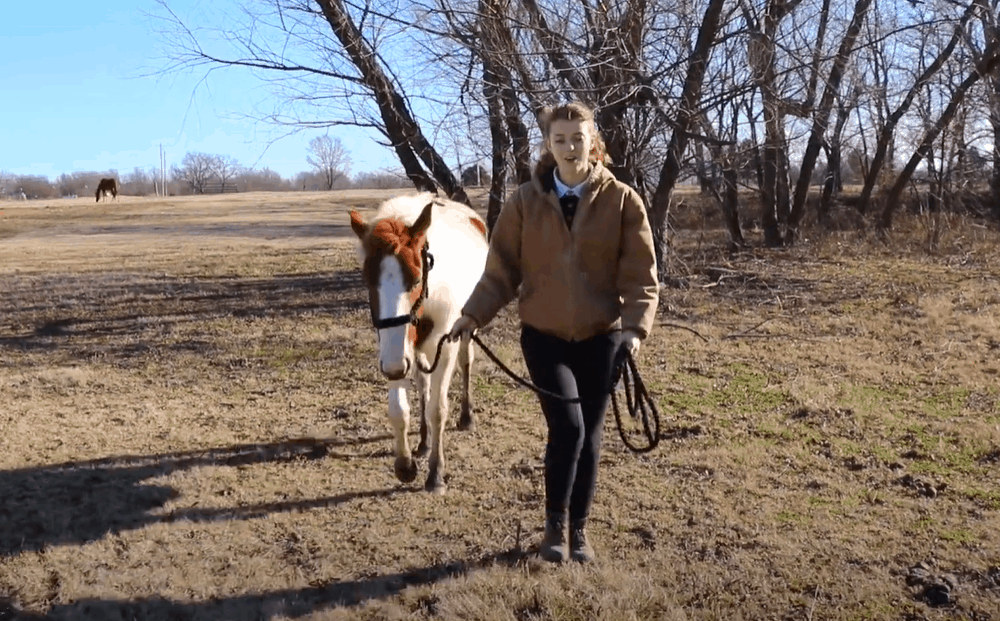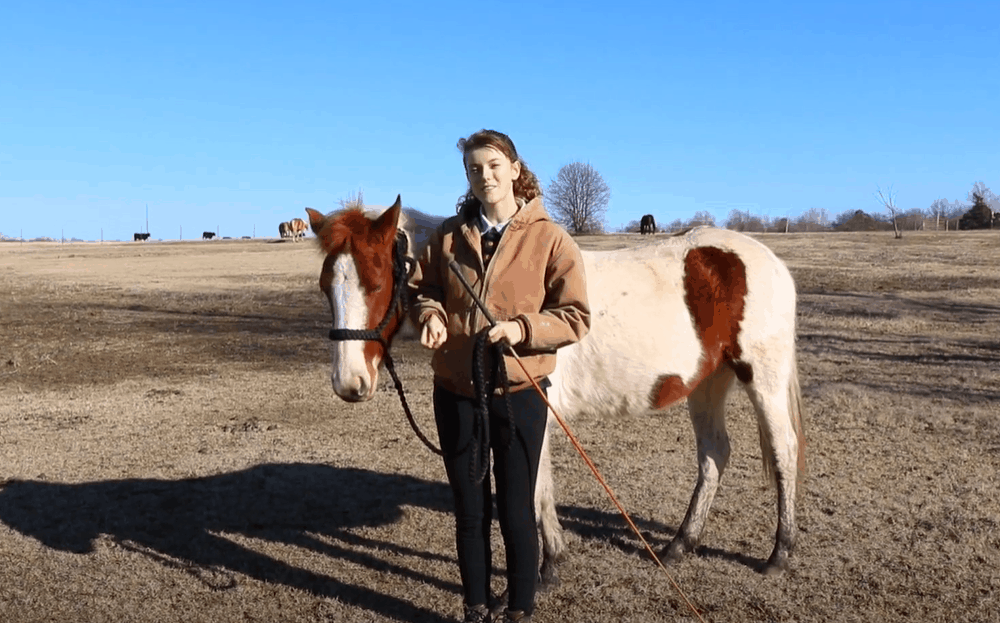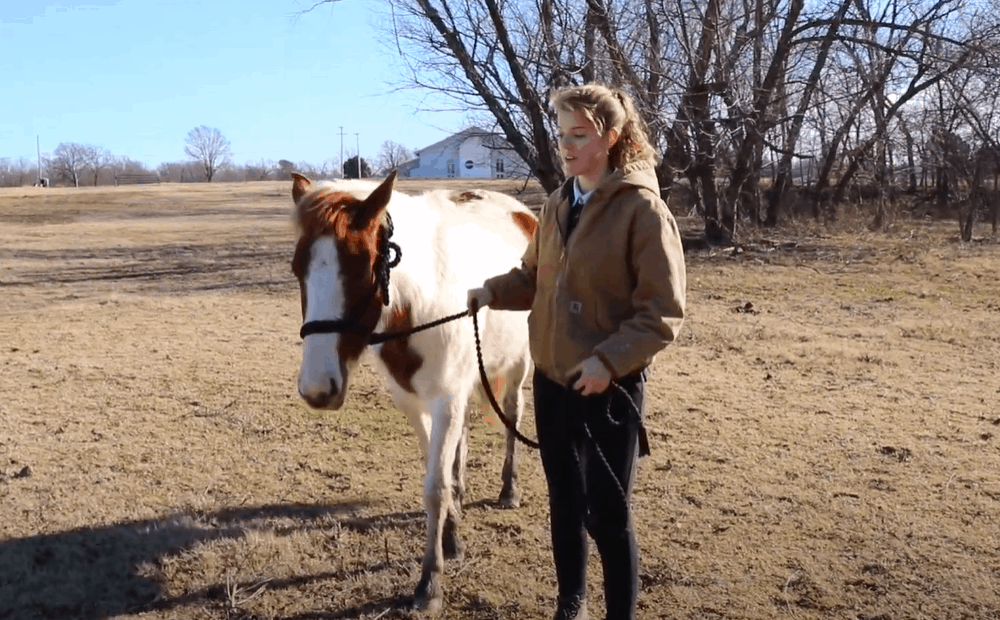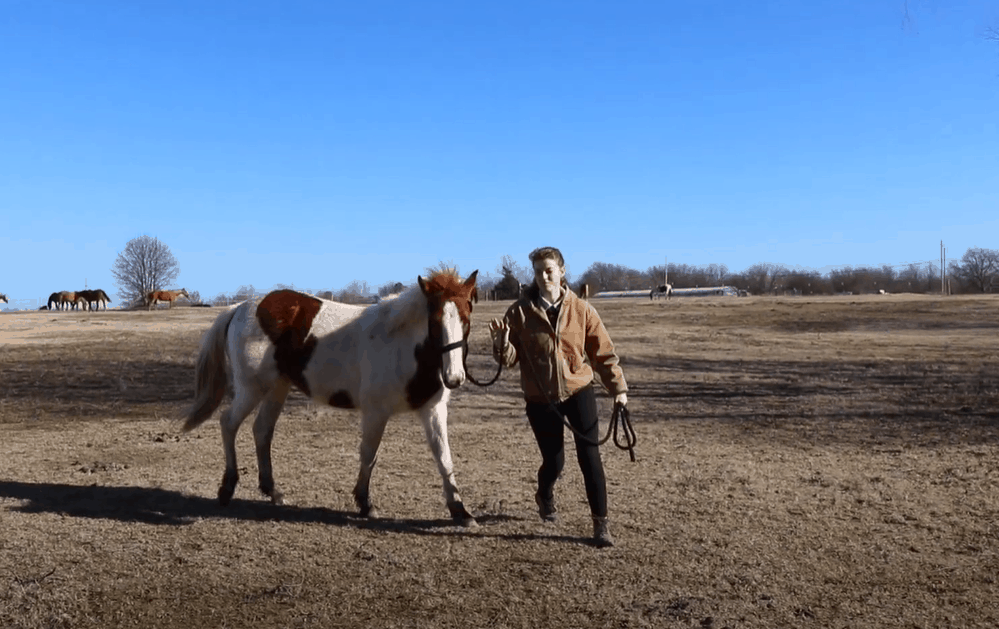Every rider dreams of calmly walking their horse without any pulling, dragging, or crowding. The good news is you can train your horse to lead politely.
Leading will simplify a lot of things for you and your equine friend—you will be able to walk him to and from his paddock, take a casual stroll, and use this time to form a bond of trust, respect, and friendship.
In this article, I will show you some easy tips on how to lead a horse. With consistent practice and some patience, you will be well on your way to enjoying calm and hassle-free walks with your equine.
How to Lead A Horse
Step 1: Position yourself to the left of the horse
You can lead a horse from the left or right side, depending on your skill level. But, leading from the left side is usually more comfortable for most riders and is the best position if you are new to handling horses.
Position yourself between the horse’s shoulder and head. It is best to stand by the horse’s side for your comfort and safety, preferably 12 inches away from its head. Some people lead from in front or behind the shoulder, but this is not the safest position.
Step 2: Practice lead rope safety
Once you are well positioned, it is time to grab the lead rope. There’s a wrong and right way to handle the rope. Holding the rope the wrong way puts you at a big risk of getting into an accident.
Never wrap the lead rope around your hand and wrist. You could suffer severe injury if the horse is startled or attempts to run suddenly while the rope is wrapped around your hand.
Also, avoid coiling the slack or the hanging portion of the lead rope. This, too, can put you at risk of injury if the rope tightens up suddenly.
The safest thing to do is fold the slack once or twice and hold it in the middle. You will have a firm grip on the lead rope without needing to wrap or coil it around your hands.
Never hold the rope too tight around the horse’s neck. This will cause him to panic and refuse to walk forward or engage in unwanted behavior such as doing half-halts or wanting to get away.
Step 3: Use the lead rope to cue the horse to walk forward
A dressage whip is an important tool to have when training your horse to walk. But, before using it, I recommend using the lead rope to encourage the horse to move forward.
Using your right hand, slightly pull the lead rope forward. Don’t tug or pull too hard, as this can startle the horse and send him into a panic, which is not an outcome you want.
As you cue your horse using the lead rope, talk to him and ask him to ‘walk’ or use any phrase you have taught to encourage the horse to move forward. You also need to walk forward for the horse to follow your lead.
Step 4: Coax the horse using a dressage whip
Sometimes, pulling the rope is not enough to get the horse to walk forward. In this case, a dressage whip will come in handy. The idea is to tap the horse’s ankle to encourage forward mobility.
Hold the whip in your right hand and gently tap on the horse’s inside hind ankle or left ankle. This will trigger the left leg to move in and forward, allowing the horse to take that first step.
You only need to use light taps to get your horse to respond. For the best results, tap with a consistent tempo and continue until the horse moves the leg as required.
Your horse might kick the hind leg you are tapping—do not panic. Be sure to position yourself on the side and not too far behind the horse’s shoulders. This will help you dodge those sudden kicks. Your equine friend might not be happy with the tapping, but keep tapping until he moves the inside hind leg as long as you are gentle.
Pro Tip: Avoid putting your horse through a drill and asking him to repeat the same action for a long period. Try limiting your training sessions to a few minutes at a so you will not frustrate your equine.
Step 5: Use verbal cues to lead your horse
I am a big believer in talking to your horse, whether you are teaching him a new skill, feeding him, or taking a nice stroll—it’s a great way to bond and gets him to trust and obey you. You will be surprised how fast horses learn new words.
As you practice how to lead a horse, try using simple verbal cues to direct him in the direction you want to go. It could be as simple as telling your equine friend to ‘walk’ or ‘come on.’
Talk to your equine friend in a calm, polite voice to avoid scaring him. A scared horse can stubbornly disobey your cues, making training sessions less productive than you would have hoped.
Tug the lead rope gently in a forward motion to signal your horse to move forward. Pay attention to your positioning to ensure that you are safe and comfortable leading the horse. At this point, remember to cue the horse verbally and, if necessary, tap the inside leg.
Step 6: Practice turning left and right
Once you get the gist of leading your horse in a straight line, the next step is learning how to turn left or right. Initially, this might seem hard, but it isn’t; you only need to stick to the basic principles of leading a horse, as I have outlined above.
To lead the horse left, maintain your position at the horse’s side. Move at least two feet away, turn your body and take steps to the left. Tug the lead line gently to signal the horse to follow you.
Leading a horse to turn right can be a bit tricky but doable. Use the lead rope to push the horse to the right while maintaining your initial position. Keep in mind that a horse will walk in the direction of its head—so as you tug the lead line, you want to point the head to the right side. As you do so, walk to the right yourself so the horse can follow you.
Lastly, when the horse arrives at the intended destination, you can ask him to stop. Simply say ‘whoa’ or the specific word you have taught him to signify stop. You should also stop and gently tug the lead line to bring the horse to a halt.
That’s it! Now you know how to lead a horse, and with a bit of practice, you will become a master at leading even the pushiest of horses. Check out some extra tips below to help you avoid common mistakes so you can quickly perfect your leading skills.
Extended Tips
Correct bad ground manners as soon as possible
Some horses will resist your attempts to lead them and will want to lead you instead. Address such bad behaviors early to have a more enjoyable experience with your equine friend.
When dealing with a horse that tries to crowd or lead you, try keeping the animal slightly behind you instead of maintaining the ideal parallel position. It is important to learn how to back up a horse that tries to crowd you or anyone else handling your horse.
Be firm and gentle
Horses are intelligent, and they will pick up your vibe and behave accordingly. To successfully lead a horse, you must convey confidence. Otherwise, the animal will not respect you enough to follow your cues. From the voice cues to the lead line and the dressage whip, show your equine friend that you are a reliable leader they can trust and follow.
Be careful not to pull the lead rope too hard, as this can scare or injure the horse, especially young ones. Effective leading requires you to tug on the lead line to cue the horse to move forward slightly. Stop tugging and applying pressure as soon as the horse responds to the cue.
Give your horse enough space
Just as you appreciate space, so does your horse. A horse may engage in bad behaviors if he feels frustrated due to crowding. So, be sure not to stand too close as to crowd him out. Still, don’t hold the lead line standing away too far away from the horse, as this can make the rope too tight and uncomfortable.
Summary
Getting your horse to walk silently beside you will set the pace for other important milestones. For you and the animal, learning this new skill will need some time and good practice. Remember, confidence is of uttermost importance as you lead a horse; you want the animal to know he can trust you to guide him. That said, you should be gentle, using a calm tone when giving verbal cues and slightly tugging on the lead rope to coax the horse to follow you.
